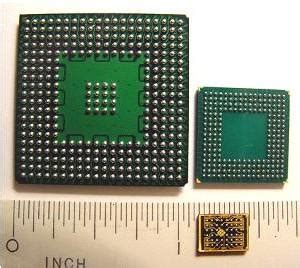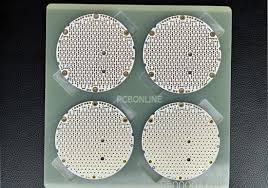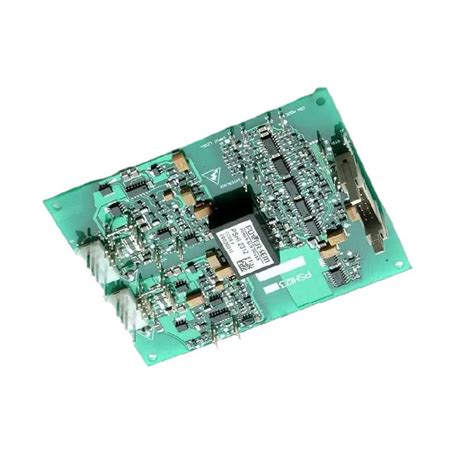Unlocking Innovation: The Future of BGA PCB Assembly Solutions
Key Takeaways
The landscape of BGA PCB assembly has undergone significant transformation, driven by pivotal advancements in both techniques and technologies. As industries demand higher levels of efficiency, the integration of innovative methods and materials has become essential. PCB assembly processes are now increasingly focused on enhancing reliability and overall performance, which are critical parameters in today’s electronic manufacturing environment. Embracing automation stands out as a crucial aspect of modern PCBA practices, allowing for reduced lead times and minimized human error. Moreover, the latest BGA PCB assembly solutions have addressed many challenges previously faced in production, showcasing real-world success stories that underline the effectiveness of these innovations. As we look forward, it is evident that the future trends in this sector will revolve around a continued emphasis on sustainability, smart manufacturing practices, and integrated technologies that promote seamless operation across the assembly line. Ultimately, these key takeaways highlight the dynamic potential of BGA PCB assembly within the ever-evolving electronics market.
The Evolution of BGA PCB Assembly: A Historical Perspective
The evolution of BGA PCB assembly has been marked by significant technological advancements that have reshaped the electronic manufacturing landscape. Initially, PCB assembly techniques were primarily manual and labor-intensive, with limitations in precision and production speed. However, the introduction of Ball Grid Array (BGA) technology offered a unique solution to many of these challenges. BGAs allowed for a higher density of connections and minimized the risk of solder joint failures, thereby enhancing the overall reliability of electronic devices.
As manufacturing processes evolved, automation began to play a pivotal role in the assembly line. Automated Optical Inspection (AOI) systems provided real-time feedback on quality assurance during the pcba process, reducing errors and improving efficiency. Moreover, advanced Soldering Techniques such as reflow soldering became standard practice, enabling manufacturers to achieve consistent results while maintaining performance standards.
“The shift towards automated systems not only streamlines operations but also reinforces product integrity,” notes industry expert Jane Doe.
To illustrate this evolution further, consider the transition from early manual soldering methods to today’s precision-driven automation:
| Year | BGA Technology Milestone | Key Advancement |
|---|---|---|
| 1990 | Introduction of BGA Packages | Higher pin count and improved thermal performance |
| 2000 | Automation in PCB assembly | Introduction of AOI technology |
| 2010 | Enhanced soldering techniques | Adoption of reflow soldering methods |
| 2020 | AI-driven quality checks | Increased operational efficiency and defect reduction |
Through these advancements, manufacturers have not only improved production efficiency but have also driven innovation in product design and complexity. The BGA PCB assembly process continues to evolve with new materials and technologies emerging that promise to further enhance both reliability and performance in future applications. This historical perspective underscores how far we have come in achieving sophisticated manufacturing solutions that meet the demands of a rapidly advancing technological world.
Key Technologies Driving BGA PCB Assembly Innovation
The landscape of BGA PCB assembly is evolving significantly, driven by key technological advancements that enhance efficiency, precision, and scalability. Among these innovations, the integration of automated processes has emerged as a cornerstone in modern pcba methods. Automation not only minimizes human error but also accelerates production timelines, making it an indispensable tool in high-volume environments. Furthermore, the adoption of advanced materials has transformed the thermal and electrical performance characteristics of assemblies, allowing manufacturers to improve overall reliability. Techniques such as X-ray inspection and optical inspection systems are playing a crucial role in ensuring the integrity of solder joints and overall assembly quality. These systems enable proactive detection of defects at unprecedented stages within the assembly process, thereby enhancing yield rates and reducing waste. As a result, manufacturers are not just focusing on meeting current demands but are also strategically positioning themselves to tackle future challenges in electronics manufacturing. The convergence of these technologies signifies a pivotal moment for BGA PCB assembly, setting new benchmarks for quality and efficiency in an evolving industry landscape.
Efficiency and Reliability: The Impact of Modern Techniques
In the evolving landscape of BGA PCB assembly, modern techniques play a vital role in enhancing both efficiency and reliability. As the demand for compact and high-performing electronic devices increases, PCB assembly processes have had to adapt. The integration of advanced technologies such as automated optical inspection (AOI) and surface mount technology (SMT) has significantly expedited production times while minimizing errors. For instance, automation not only streamlines the assembly line but also ensures consistent quality through repetitive tasks that are executed with precision that surpasses human capability. This shift towards automation in PCBA has led to remarkable improvements in throughput, allowing manufacturers to meet market demands swiftly and effectively. Moreover, real-time monitoring systems play a crucial role in enhancing reliability, offering instant feedback that helps in identifying potential issues before they escalate into significant problems. By leveraging these modern techniques, companies are positioned to raise their standards of efficiency while bolstering reliability—two critical components that ultimately drive the performance of electronic products globally. In conclusion, the impact of these innovations is clear; as the industry continues to evolve, embracing them will be pivotal for sustained growth and competitiveness in BGA PCB assembly solutions.
Best Practices for Implementing BGA PCB Assembly Solutions
When considering the implementation of BGA PCB assembly solutions, it’s crucial to follow systematic best practices that enhance not only the efficiency but also the reliability of the final product. One foundational step is to ensure that the design is optimized for pcba processes. This involves using well-defined component layouts and ensuring proper spacing to facilitate thermal and electrical performance. Another best practice is to invest in high-quality materials, as the choice of substrates and solder can significantly impact overall performance during assembly. Additionally, performing rigorous testing during various manufacturing stages can help catch potential issues early, minimizing defects and reducing costs associated with failures later in production. Implementing automated inspection technologies can also enhance quality control, allowing for faster identification of defects that may compromise the pcb assembly process. Providing comprehensive training for operators ensures that they are familiar with both traditional methods and innovative techniques associated with BGA arrangements. By adhering to these best practices, companies can pave the way towards achieving peak performance in their BGA PCB assembly solutions while positioning themselves competitively within the ever-evolving landscape of electronic manufacturing.
The Role of Automation in Future BGA PCB Manufacturing
The integration of automation in BGA PCB assembly is revolutionizing the landscape of electronic manufacturing. As companies strive for higher efficiency and reliability, automated processes are becoming increasingly essential. Utilizing advanced robotics and artificial intelligence allows for streamlined operations that minimize human error and enhance production speed. Automated systems can perform intricate tasks such as precision placement of BGAs (Ball Grid Arrays) and real-time quality inspections, ensuring a high standard of PCB assembly. By leveraging these innovative technologies, manufacturers can quickly adapt to changes in market demand, facilitating greater flexibility in production schedules. Furthermore, data analytics powered by automation provides valuable insights into operational performance, enabling continuous improvement. This transition towards a more automated approach not only contributes to cost reduction but also supports the drive towards sustainable manufacturing practices as energy-efficient machinery reduces overall resource consumption. In conclusion, the role of automation in future BGA PCB assembly processes is integral to overcoming current challenges in the industry while paving the way for enhanced innovation, sustainability, and competitiveness in the global market.
Case Studies: Success Stories in BGA PCB Assembly
Exploring successful implementations of BGA PCB assembly solutions offers valuable insights into the evolving landscape of pcb assembly. Many companies have leveraged innovative techniques to drive progress in their production processes. For instance, a leading consumer electronics brand utilized BGA technology to enhance their product’s performance and reliability, resulting in a significant reduction in failure rates. With this shift, they saw not only an improvement in product quality but also a notable increase in customer satisfaction. Another case involves an automotive manufacturer that adopted advanced pcba methods, allowing for greater efficiency in their workflows and a shortened time-to-market for critical components. These examples underscore the transformative impact of advanced BGA PCB assembly practices on various sectors, emphasizing the importance of staying at the forefront of technology to meet rising demands and ensure competitive advantage. By analyzing these success stories, manufacturers can gain inspiration and formulate strategies that incorporate best practices in their own pcb assembly processes.
Challenges and Solutions in BGA PCB Assembly Processes
The BGA PCB assembly process presents various challenges that can impact production timelines and product performance. One significant challenge is the complexity of the BGA packaging itself, which requires precise alignment and soldering techniques to avoid issues like bridging and cold joints. Additionally, the dense nature of pcba designs can lead to thermal management problems, making it critical to ensure effective heat dissipation during assembly. As a solution, manufacturers are increasingly adopting advanced soldering techniques such as reflow soldering, which enhances the reliability of connections while minimizing thermal stress on components.
Another notable challenge is ensuring consistent quality across batches, particularly in high-volume production runs. Implementing stringent quality control measures, including automated optical inspection (AOI), plays a crucial role in detecting defects early in the assembly process. Moreover, utilizing specialized pcb assembly software can assist engineers in optimizing design layouts to improve manufacturability and reduce assembly time.
Collaboration with skilled suppliers who can provide customized solutions is also essential for addressing specific challenges encountered during BGA assembly. By leveraging a combination of innovative techniques and advanced technologies, manufacturers are better equipped to navigate the complexities of BGA PCB assembly, ultimately enhancing both efficiency and product reliability in their operations.
Looking Ahead: Future Trends in BGA PCB Assembly
As the demand for more compact and efficient electronics continues to rise, the future of BGA PCB assembly is poised for significant transformation. The integration of advanced technologies will not only enhance design capabilities but also optimize manufacturing processes. One of the key trends is the adoption of smart manufacturing techniques, where automation and real-time data analytics play crucial roles in improving the overall efficiency of PCB assembly. This shift towards integrating Internet of Things (IoT) devices within the PCBA process enables manufacturers to monitor and adjust operations dynamically, ensuring higher quality and reduced downtime.
Moreover, innovations in materials science are expected to lead to the development of new substrates that offer better thermal management and electrical performance within BGA assemblies. The focus on sustainable practices will also influence future trends, with manufacturers seeking eco-friendly materials and processes that reduce waste without compromising performance. This move towards sustainability aligns with global industry goals, ensuring that environmental responsibility becomes a core aspect of BGA PCB assembly.
Additionally, we expect to see enhancements in inspection technologies. Automated optical inspection (AOI) systems combined with machine learning will revolutionize how defects are detected during the assembly process, enhancing both reliability and efficiency. As these advancements unfold, they will pave the way for a new era in electronics manufacturing, characterized by rapid innovation and continuous improvement in quality standards across PCBA outputs. The journey into this exciting future will undoubtedly redefine industry benchmarks for performance, cost-effectiveness, and reliability in electronics manufacturing.
Conclusion
The landscape of BGA PCB assembly is continuously evolving, driven by advancements in technology and innovative practices. As manufacturers strive for higher efficiency and reliability, the techniques employed in pcba have undergone transformative changes. This shift is not merely a response to market demands but also an indication of the direction in which electronic manufacturing is headed. The integration of smart automation systems enhances the assembly process by ensuring precision and reducing the occurrence of defects, which ultimately leads to improved performance. Moreover, adopting best practices in BGA PCB assembly helps companies navigate challenges, turning potential pitfalls into opportunities for advancement. These innovations are setting a foundation for future growth within the industry, making it essential for stakeholders to stay informed about emerging trends that will shape the future of pcb assembly. With ongoing research and development, the potential for new techniques and materials anticipates a dynamic shift that will further elevate standards in electronic manufacturing.
FAQs
What is BGA PCB assembly?
BGA PCB assembly refers to the process of mounting Ball Grid Array (BGA) components onto a printed circuit board (PCB). This method is favored for its ability to support high-density packaging and excellent electrical performance.
How does BGA compare to other PCB assembly techniques?
BGA technology stands out due to its reduced inductance and improved thermal performance, making it more reliable compared to other traditional PCB assembly methods like Through-Hole and Surface Mount Technology (SMT).
What are the advantages of BGA PCB assembly?
The key advantages include enhanced electrical performance, improved thermal management, and compatibility with advanced manufacturing processes. These factors contribute significantly to the overall reliability of electronic devices.
What challenges do manufacturers face with BGA PCB assembly?
Challenges include accurate placement of components, solder joint reliability, and potential for hidden defects that may not be visible during standard inspections. Adopting best practices can mitigate these issues effectively.
How can companies ensure quality in their BGA PCBA?
Implementing rigorous quality control measures such as X-ray inspection, automated optical inspection (AOI), and adhering to industry standards can help maintain high-quality PCBA processes.
For further insights on PCB assembly solutions, please click here: Andwin PCB Assembly Solutions







